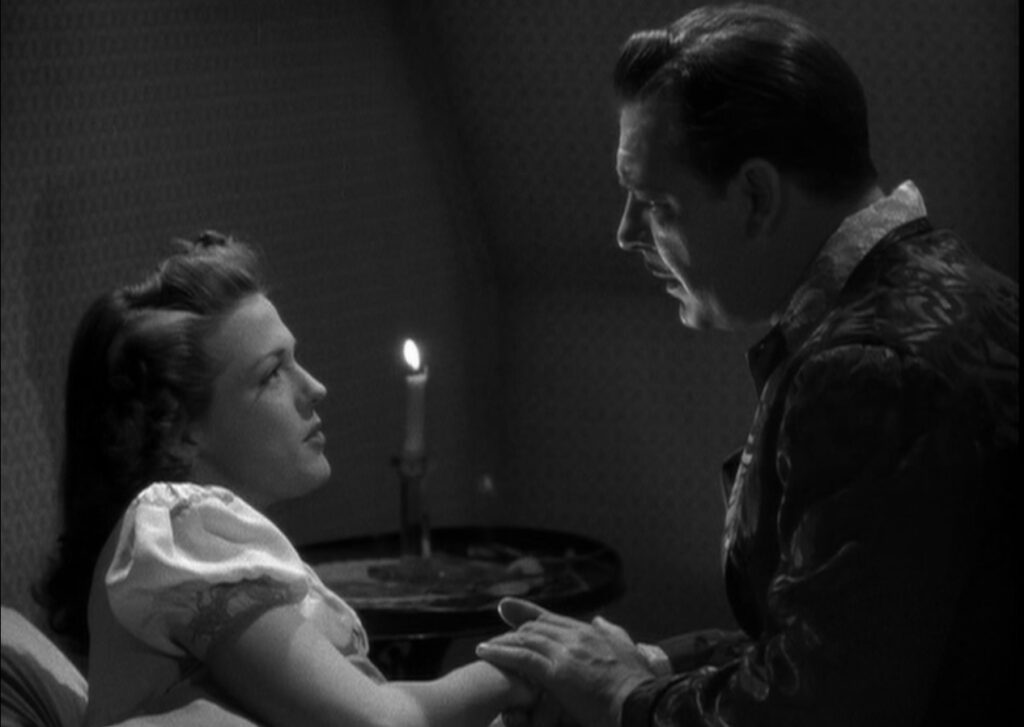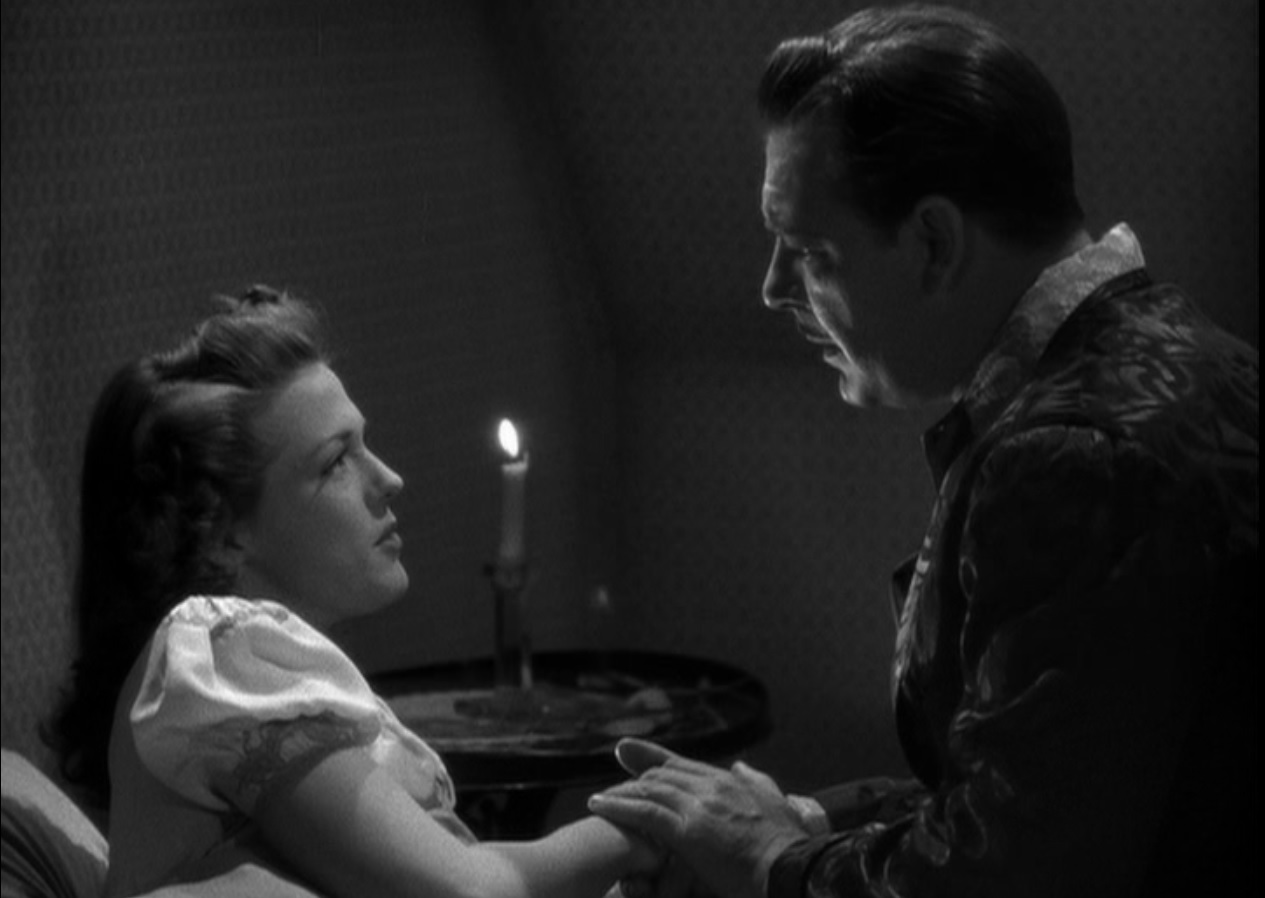Movie Review: Weird Woman (1944) directed by Reginald Le Borg
Paula Slayton’s (Anne Gwynne) mother passed away when she was quite young. Her father, a professor of archaeology, died when she was in her early teens, and she was thereafter raised by her native nurse Laraua (Hanna Kaapa) and taught the native ways, including (what they believed to be) powerful protective magic. Years later, as an adult, she met one of her father’s old students, Norman Reed (Lon Chaney, Jr.) who’d returned to the islands and witnessed a ceremony Paula was part of. One thing led to another, they fell in love and got married, and Norman took Paula Clayton Reed back to the college where he was a professor.

Paula’s reception is mixed. Dean of Men Septimus Carr (Harry Hayden) is a bit of a lecher, and appreciates Paula’s fresh-faced beauty. His much younger sister, and campus librarian, Ilona Carr (Evelyn Ankers) is frosty. She was under the impression that she was the woman Norman was interested in (he thought of it as a mild flirtation) and is seething at the perceived betrayal. Professor Millard Sawtelle (Ralph Morgan), a colleague of Norman’s in the sociology department, is indifferent to Paula. But his wife Evelyn Sawtelle (Elizabeth Russell) is hostile because she sees Professor Reed’s successful new book as a threat to her husband’s becoming head of the department, and Paula is associated with that. Dean of Women Grace Gunnison (Elisabeth Risdon), who has risen as far as a woman can at the college, and thinks of Norman like a favorite nephew, is kind.
Wanting to support her husband, Paula continues to perform her rituals of protection and good luck. However, Norman believes the supernatural is a bunch of superstitious rubbish, and her odd behavior is causing him embarrassment. Finally, he puts his foot down, demands that she give up magic, and destroys her tools, including the good luck amulet bestowed upon Paula by Laraua.
Immediately thereafter, things start going horribly wrong for our couple, starting with the suicide of Professor Sawtelle, which Mrs. Sawtelle believes Norman is responsible for. Margaret (Lois Collier), a student with a crush on Norman, comes on to him, gets rejected, and her would-be swain David Jennings (Phil Brown) misconstrues what happened with lethal results. Are the Reeds truly cursed?
This Universal Pictures horror movie is loosely based on the novel Conjure Wife by Fritz Leiber Jr. It was done as part of the “Inner Sanctum” series of films, and complete cuts start with a floating head in a crystal ball (David Hoffman) welcoming us to that location.
Unlike the novel, where one of the major plot points is that magic is 100% real, this movie primarily goes with non-supernatural explanations. In the first half of the movie, we see Ilona setting up the disaster dominoes with mundane lies and innuendo. She’s clever and evil, but probably not a witch. The seemingly magical events could all be remarkable coincidences and the power of suggestion. Still, the setup and cinematography place this story squarely in the horror category.
Mr. Chaney is fine, but this movie really belongs to the female characters, particularly Ms. Ankers as Ilona, her only “villain” role. She does cold fury and sly manipulation well, and then the mental breakdown as she is led to believe that she herself has been cursed to die.
Conjure Wife has been adapted into movies twice more, of which Night of the Eagle is considered the most faithful.
Content note: Off-screen suicide, someone is lethally shot during a struggle (no blood), we see the shadow of someone being hanged. Harassing phone calls. The depiction of the natives is…dated, but not as bad as in other movies of the time. Older teens should be fine.
This movie is an underrated gem, and well worth searching out. It’s just over an hour, so would do well as part of a double feature with another horror or thriller movie.

